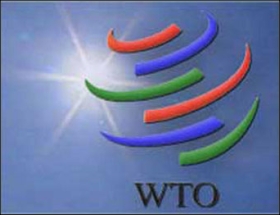|

|
Structural bottlenecks barrier to higher growth in India: WTO
|
|

|
|
| Top Stories |
 |
|
|
|
SME Times Nrws Bureau | 04 Jun, 2015
Despite India raising foreign ownership limits in some sectors, structural bottlenecks remain a barrier in achieving higher growth, the World Trade Organization has said.
"Measures to attract foreign direct investment (FDI) have included gradually increasing the number of sectors in which FDI is permitted and reducing sectoral restrictions. Since its last Review, India has continued to liberalize its investment policies, including raising foreign-ownership limits in some sectors, such as insurance and railway transport," the WTO said in a report for India's trade policy review it conducted over June 2-4.
It, however, added that: "As recognized by the government, structural bottlenecks remain a barrier to achieve a higher growth."
"This includes delays in project approval, ill-targeted subsidies, low manufacturing base and low agricultural productivity, difficulty in land acquisition, weak transportation network and power supply, and strict labour regulations and skill mismatches," the report said.
Trade Policy Reviews are an exercise, mandated in the WTO agreements, in which member countries' trade and related policies are examined and evaluated at regular intervals.
India is an original Member of the WTO and provides most favoured nation (MFN) treatment to all members and other trading partners.
WTO said the bottlenecks were being addressed through investment in infrastructure and education, simplification of the business environment by eliminating over-regulation, and increasing predictability in trade and investment regimes.
US Deputy Chief of Mission Christopher Wilson at the WTO Trade Policy Review of India in Geneva said: "We have seen a positive recognition from the Indian government that it can do more to attract foreign investment. We are encouraged by a number of reforms being pursued with respect to taxes, land acquisition and labour.
"There are encouraging signs that positive trade-specific reforms may be contemplated, including the drafting of the National Intellectual Property Rights Policy and recent public statements by Prime Minister (Narendra) Modi calling for a stronger IPR regime," a statement by the Office of the US Trade Representatives cited Wilson as having said.
India, in its trade policy review report prepared for the meeting, said that since 2013-14 the country's economy seemed to have turned the corner and there was an easing of the pressures associated with an economic slowdown, persistent inflation, an elevated fiscal deficit, slackening domestic demand, external account imbalances, and oscillating value of the rupee.
It further mentioned that: "The government is conscious of challenges that can be posed by the uncertainties in the external environment, possible spill-overs of below normal agricultural growth and challenges relating to the massive requirements of skill creation and infrastructural upgradation."
India's trade policy objectives are stipulated in its Foreign Trade Policy (FTP), which is issued every five years, but revised periodically to take into account internal and external factors. The new 2015-20 FTP, released on April 1, 2015, aims to make India a significant participant in international trade and to raise its share of global exports to 3.5 percent in 2020.
"This is expected to be achieved by providing a sustainable and stable policy environment for foreign merchandise and services trade; linking rules, procedures and incentives for trade with other recent initiatives such as "Make in India", "Digital India" and "Skills India"; promoting the diversification of India's exports by assisting key sectors to become more competitive; and creating an architecture for India's engagement with key regions of the world," the WTO review observed.
The WTO said India's WTO-bound tariff levels were much higher than the applied rates, especially for many agricultural products.
"These gaps allow the Government to modify tariff rates in response to domestic and international market conditions but, at the same time, they reduce tariff predictability," it added.
Average tariff protection for agriculture (36.4 percent) remains, therefore, substantially higher than for non-agricultural products (9.5 percent), the report said.
"India initiated a new support scheme through the National Food Security Act 2013, which aims to provide food grains procured by the government at subsidized prices to around two-thirds of the population. This is likely to have a significant impact on the overall subsidy provided by the government," it added.
|
|
|
| |
|
|
|
|
|
|
|
|
|
|
|
|
|
|
| |
| Customs Exchange Rates |
| Currency |
Import |
Export |
US Dollar
|
66.20
|
64.50 |
UK Pound
|
87.50
|
84.65 |
Euro
|
78.25
|
75.65 |
| Japanese
Yen |
58.85 |
56.85 |
| As on 13 Aug, 2022 |
|
|
| Daily Poll |
 |
 |
| PM Modi's recent US visit to redefine India-US bilateral relations |
|
|
|
|
|
| Commented Stories |
 |
|
|
|
|
|
| |
|